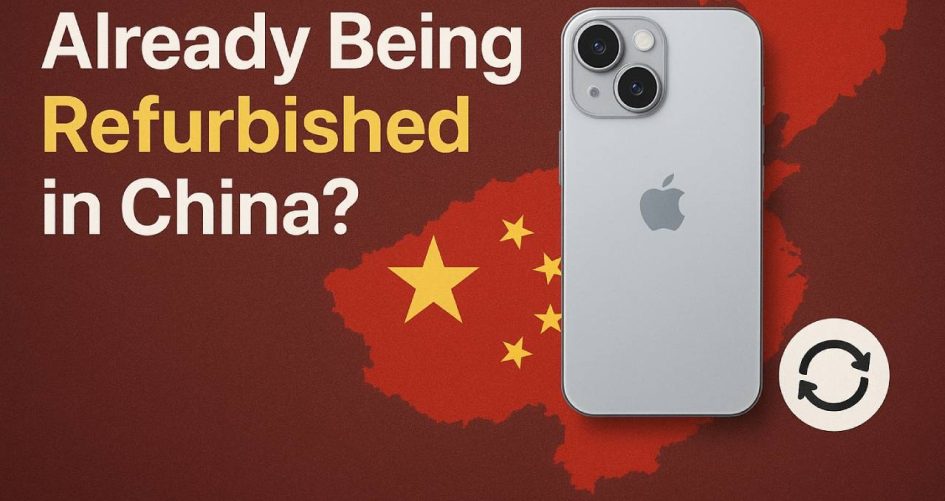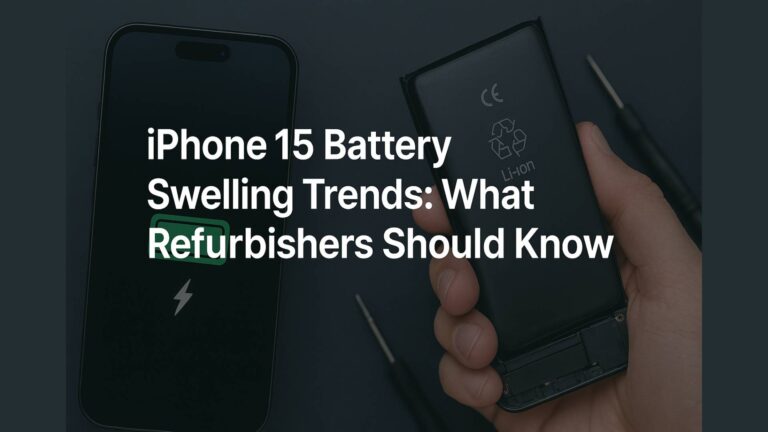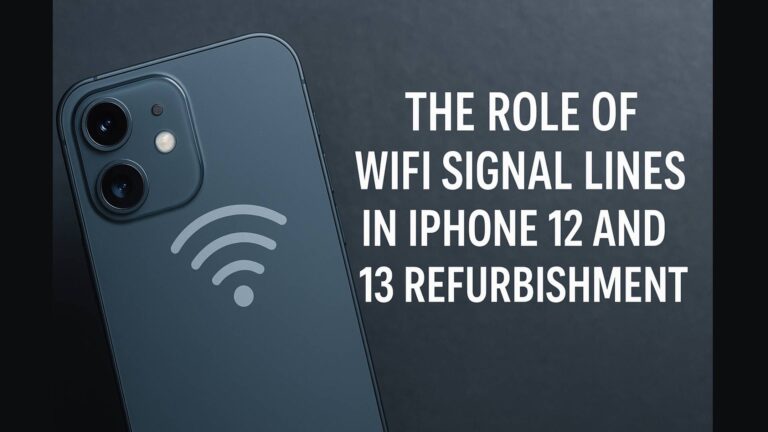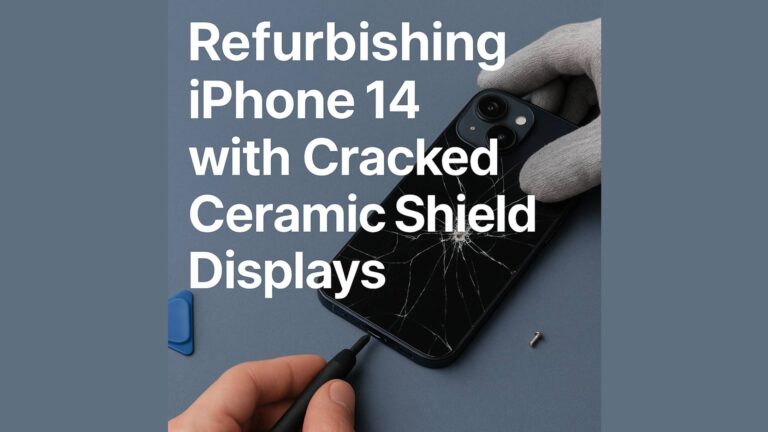Yes—it’s already happening. In the ever-evolving landscape of mobile tech, the iPhone 16 refurb market in China is heating up long before the official Apple launch. Teardowns are emerging from Shenzhen labs, and early iPhone repair activities are buzzing through the underground and semi-official sectors. Industry insiders now confirm that a full iPhone 16 teardown has already been performed, shedding light on the internal components, repair challenges, and refurbishment potential of Apple’s next-gen flagship.
Let’s dive deep into what’s really happening in the iPhone 16 refurb scene and how it could shape the mobile industry worldwide. Know more.
The Rise of the iPhone 16 Refurb Market
China has long been the hub of third-party mobile refurbishing, and this year, the country is again leading the way—this time with pre-release devices. The iPhone 16 refurb market is unfolding faster than expected due to supply chain leaks, insider connections, and skilled technicians who specialize in component harvesting and repair long before the global launch date.
The motivation? Huge market opportunity and technological curiosity.
How iPhone 16 Devices Are Entering the Refurb Cycle Before Launch
You might be wondering: How is refurbishing possible before the product is even released?
- Factory Seconds and Testing Units: These are often discarded or diverted during Apple’s internal QA testing phase.
- Prototype Leaks: Early production samples or engineering validation test (EVT) models sometimes find their way out of factories.
- Damaged Units: Testers and reviewers occasionally return cracked units or bricked phones—perfect for teardown and analysis.
As soon as these devices enter Chinese tech markets, early iPhone repair experts begin reverse engineering them.
Inside the iPhone 16 Teardown Labs in Shenzhen
Shenzhen’s Huaqiangbei market is a world leader in reverse-engineering electronics. Reports of a full iPhone 16 teardown reveal:
- A modular logic board layout that’s easier to replace
- Redesigned cooling systems for improved thermal flow
- Smaller TrueDepth Face ID assembly
- A new battery connector design, possibly proprietary
These labs not only test and evaluate but also contribute to creating repair manuals and refurbishing guides used globally.
Early iPhone Repair: Legitimate or Grey Market?
The legality of early iPhone repair remains murky:
| Aspect | Gray Area Concern |
| Device Origin | Possibly unauthorized units |
| AppleCare Compliance | Voided automatically |
| Intellectual Property | Teardown of pre-release products may breach NDAs |
| Market Sales | Refurb units may not pass customs in all regions |
While ethically debated, these repairs push the limits of innovation and access in mobile refurbishment.
What the iPhone 16 Teardown Reveals About Its Repairability
Highlights from the iPhone 16 teardown:
- Battery & Screen Accessibility: Improvements in adhesive placement make disassembly safer and faster.
- Camera Shielding: More modular compared to iPhone 15, great for repairs.
- Logic Board Soldering: Still compact and layered, but slightly more spaced for thermal control.
These changes make future refurbishments more efficient.
iPhone 16 Refurb Market: Who’s Driving the Demand?
Even without a public release, demand exists:
- B2B Wholesalers want early units for benchmarking and resale.
- Tech Influencers seek to showcase exclusives.
- Developers use early hardware to test apps and accessories.
China’s network of underground buyers and early-access players fuels this demand.
Types of iPhone 16 Parts Already in Circulation
According to market reports and seller inventories:
- OLED Screens with suspected Apple calibration
- Titanium Housing Frames mimicking Apple’s finish
- SIM Trays, Cameras, and Connectors sourced from supplier overstock
Though some parts are “inspired” replicas, others are near-identical to final production models.
Challenges in Refurbishing the iPhone 16
Early repairs aren’t without risk:
- Software Locks – Apple’s activation lock can render refurbished units useless.
- True Tone and Face ID – Difficult to restore without Apple’s tools.
- Part Variability – Early batches often differ from retail versions.
Still, skilled refurbishers are developing workarounds, such as EEPROM data transfers and donor logic boards.
iPhone 16 vs iPhone 15: What’s New in Design and Repair?
| Feature | iPhone 15 | iPhone 16 (Early Reports) |
| Frame | Titanium | Thinner, lighter titanium |
| Battery | Single-cell | Denser layout |
| Display | Notchless Dynamic Island | Higher brightness, same cutout |
| Logic Board | Compact stack | Modular upgrade slots (rumored) |
Each of these affects how repairs and refurbishments are carried out.
Why China Leads the World in Early iPhone Repair
China’s dominance stems from:
- Access – Close to the same supply chain that manufactures iPhones.
- Speed – Technicians can teardown and replicate within 48 hours.
- Volume – Thousands of parts suppliers ready to experiment.
The ecosystem is agile, resourceful, and unafraid to explore legal gray zones to stay ahead.
How Early Teardowns Influence the Global Refurb Market
Early iPhone 16 teardown results ripple across the industry:
- Set global refurb pricing benchmarks
- Influence part inventory planning
- Encourage innovation in third-party repair tools
Even Apple studies these teardown reports to patch vulnerabilities and protect IP.
Impact of Early iPhone 16 Refurbishing on Apple’s Ecosystem
Apple is well aware of these practices. As a result, it:
- Implements genuine parts alerts
- Uses iOS locks to disable certain hardware swaps
- Limits availability of diagnostic tools
Still, the refurb ecosystem adapts—fast.
Legal Gray Zones in iPhone 16 Early Refurbishment
- Customs Risk: Devices could be seized as unauthorized.
- IP Rights: Apple may pursue legal action for teardown distribution.
- Region Locking: Devices may be unusable outside of specific geographies.
Wholesalers must weigh the risk versus market potential.
Is Early Refurbishing Safe for End Users?
Yes—if done right.
- Use verified technicians and labs
- Ensure parts are tested and documented
- Clearly inform buyers if the product is pre-release or uncertified
Wholesalers should offer limited warranties and conduct QC inspections on every unit.
What Wholesale Buyers Need to Know About iPhone 16 Repairs
If you’re looking to tap into the iPhone 16 refurb market, remember:
- Authenticate all parts
- Plan for market volatility
- Partner with experienced teardown labs
- Avoid retail resale in regions with strict IP enforcement
The opportunity is high—but so are the stakes.
FAQs: iPhone 16 Refurb Market Trends
Q1. Can I buy iPhone 16 refurb units now?
Yes, but mostly through internal channels or unofficial B2B networks in China.
Q2. Are these devices safe to use?
If thoroughly tested, yes. Be cautious of software locks.
Q3. What parts are hardest to replace?
Face ID and logic boards remain complex.
Q4. Will early units support iOS updates?
Only if they pass Apple verification and activation.
Q5. Is refurbishing legal?
Yes, but early refurbishing of unreleased products enters a legal gray area.
Q6. What is the average cost of an early iPhone 16 refurb unit?
Currently ranges between $950–$1200 depending on condition and source.
Conclusion: iPhone 16 Refurbishing Is Real—and Growing
The iPhone 16 refurb market, driven by early iPhone repair and detailed iPhone 16 teardown insights, is not just a trend—it’s a glimpse into the future of mobile repair. While risks remain, the opportunity for wholesalers and technicians is enormous. Those who prepare early will be best positioned to profit from Apple’s next release before the competition even catches on. Know more.





